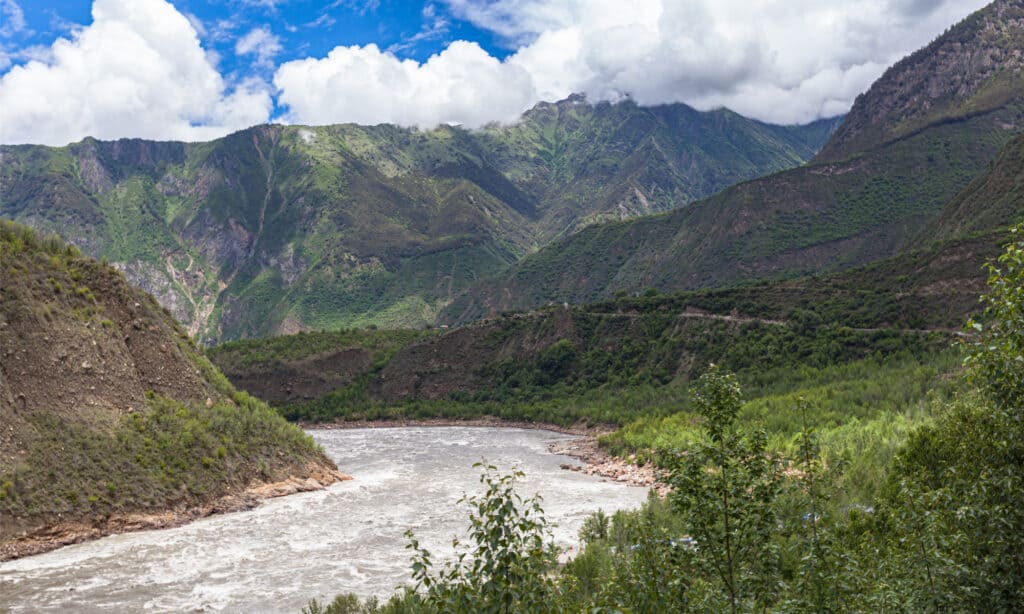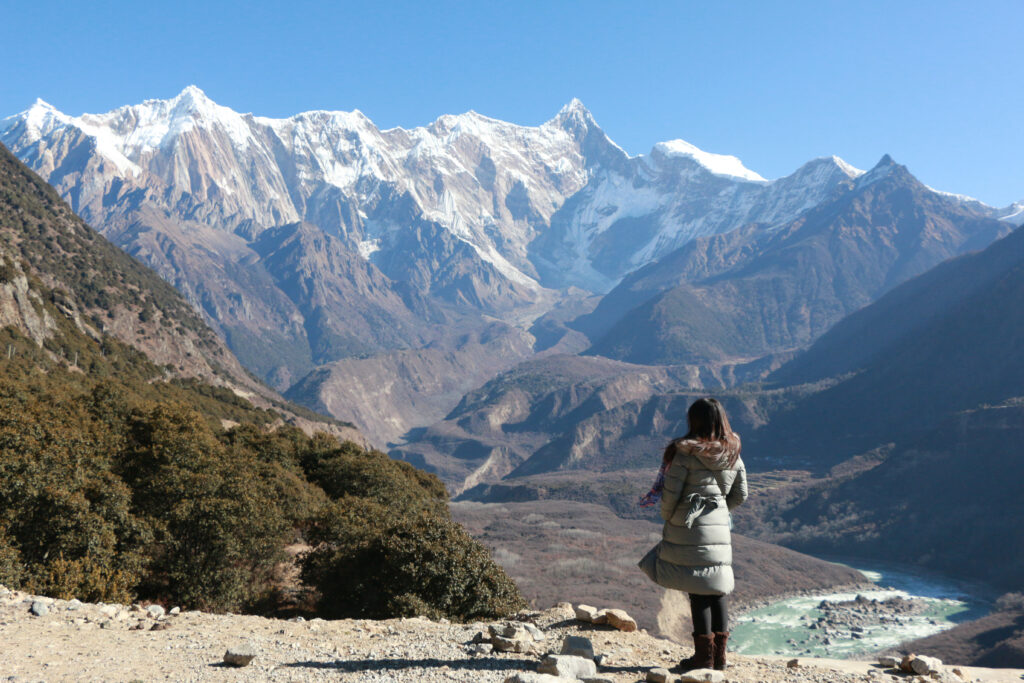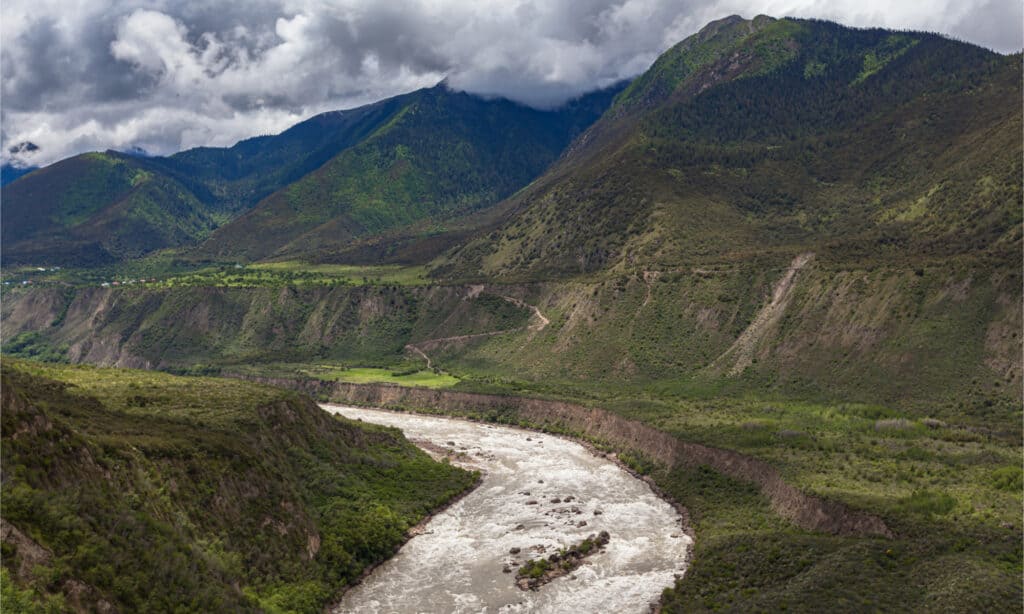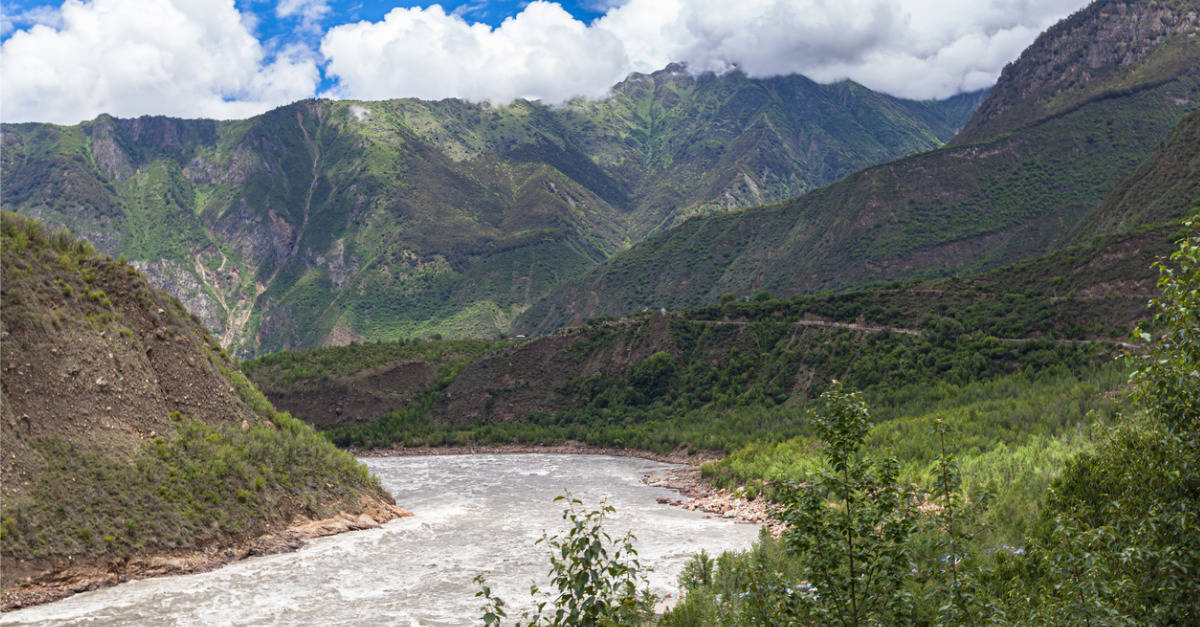Known as “The Last Fairyland in the World,” there is something utterly beautiful and awe-inspiring about the world’s deepest canyon. The Yarlung Tsangpo Grand Canyon of Tibet can boast a depth 3x deeper than the United States Grand Canyon.
The area it is located in is quite remote, sunk into the Qinghai-Tibet plateau. This is also home to Mount Everest, the tallest mountain in the world. The river flowing through this canyon is called the “Mount Everest of Rivers” and is difficult to reach. This is why the Western world didn’t reach it until the year 1913.
The beauty of this hidden fairyland is untold, as so few had laid eyes on it until recent years. The ecosystems within the gorge range from arctic to tropical. It’s no wonder, the canyon carves from the highest mountain point to the canyon depths.
The Tsangpo Canyon and the ecosystems within inspired the idea of Shangri-la in James Hilton’s book Lost Horizon. Picture the stark beauty of sub-tropical forests growing above 3280 feet out of the side of a mighty mountain. That forest and its inhabitants alone seem magical, but there is more to see.

The Yarlung Tsangpo Grand Canyon is 19,714 feet deep.
©VogelSP/Shutterstock.com
How Deep is the Yarlung Tsangpo Grand Canyon?
At a depth of 19,714 feet, the Yarlung Tsangpo Grand Canyon is the deepest canyon on land. It creeps into the depths of the earth’s crust, creating a hauntingly beautiful landscape most eyes are never privy to.
Various elevations exist within the canyon, as it starts in a high territory before whittling its way through the rock. Forming over many generations, as the river itself flowed, the canyon continues to deepen over 2.5 million years. The river deposits sediment and the canyon grows.
Due to the nature of this canyon, being so unexplored and untouched by human interference, there is a unique and exotic blend of nature. There are animals and plants remaining undiscovered, along with variations in elevation and temperature making no corner like the others.
Where Is the Yarlung Tsangpo Grand Canyon Located on a Map?
The Yarlung Tsangpo Grand Canyon lies to the east of the Yarlung Tsangpo River. The former is a popular destination for explorers and whitewater rafting enthusiasts.
Five Cool Facts About Yarlung Tsangpo Grand Canyon

Looking at Mount Namjagbara in the Yarlung Tsangpo Grand Canyon, provides a moment a release.
©Wenbo/Shutterstock.com
If you’re looking for an awe-inspiring natural wonder, look no further than the Yarlung Tsangpo Grand Canyon. This massive canyon, located in Tibet, China, is one of the most incredible geological formations on the planet.
Here are five cool facts that make it even more amazing:
- The Yarlung Tsangpo Grand Canyon is the deepest canyon in the world, with an average depth of over 5,000 meters (16,000 feet). That’s more than twice as deep as the Grand Canyon in the United States! The canyon is so deep that it’s often shrouded in mist and clouds, making it even more mysterious and awe-inspiring.
- The Yarlung Tsangpo River, which flows through the canyon, is one of the most important rivers in Asia. It’s the highest major river in the world, with an average elevation of over 4,000 meters (13,000 feet). The river is a major source of water for millions of people in China, India, and Bangladesh. In fact, it’s estimated that the river provides water to over one-third of the world’s population!
- The Yarlung Tsangpo Grand Canyon is home to a unique and diverse ecosystem. The canyon’s rugged terrain and extreme weather conditions have created a habitat for many rare and endangered species of plants and animals. Some of the species found in the canyon include the snow leopard, the Tibetan macaque, and the Himalayan black bear.
- The Yarlung Tsangpo Grand Canyon has a rich cultural history. The canyon is considered to be the birthplace of Tibetan civilization and is home to many ancient monasteries and temples. The Potala Palace, the former residence of the Dalai Lama, is located just a few kilometers away from the canyon.
- The Yarlung Tsangpo Grand Canyon is a popular destination for adventurous travelers. The canyon’s rugged terrain and stunning natural beauty make it an ideal location for hiking, camping and exploring. Many tour operators offer guided trips through the canyon, allowing visitors to experience its majesty up close and personal.
The Yarlung Tsangpo Grand Canyon is truly an amazing natural wonder. With its incredible depth, unique ecosystem, rich cultural history, and popularity among adventure travelers, it’s easy to see why it’s considered one of the most incredible geological formations on the planet.
How Was the Yarlung Tsangpo Grand Canyon Formed?

The
canyon was likely formed
by a combination of its winding river and the movement of tectonic plates.
©Peter Stein/Shutterstock.com
The river is often referred to as the Yarlung Tsangpo River, but its actual name is the Brahmaputra River. Millions of years ago, the river began its journey through the mountains from India and Tibet, depositing sediment as it traveled.
As the sediment built up and the river deepened, the canyon grew. The pressure of the water pushes sediment outward or downward. It’s not just rivers that create these master architectures, but also the movement of tectonic plates, natural erosion, and weather.
Tectonic plates are the solid rocks that hold up what we call our continents. They used to be all connected but over time cracked and drifted apart. As they shift, they push against or apart from one another, creating things like mountains and canyons. It makes sense the deepest canyon in the world is among the tallest peaks.
There are waterfalls that have formed through the path of the river, including the aptly named “Rainbow Falls” which is not as big as hoped by the initial explorer who discovered it.
There are all sorts of trees managing to grow in the canyon, often called the “five-color forests”. The trees have this name because they are emerald green and jade green, then change through the seasons to add yellow, orange, and red to the mix, making them a myriad of colors.
The picture woven of the Yarlung Tsangpo Grand Canyon is one of lush greenery, chiseled rock, and a racing river through which only the foolhardy would travel. This canyon is one that marks the record books in depth and makes its way as far as possible into the earth.
Exploring the “Everest of Rivers”

The Yarlung Tsangpo River is the portion of the Brahmaputra River that flows through Tibet.
©Meiqianbao/Shutterstock.com
Scott Lindgren, a filmmaker, led an expedition in 2002. They were the first group to kayak through the river within the canyon successfully, taking 45 days to do so as a group of 93 adventurers followed on land to provide food and supplies as the team made headway. Two previous expeditions ended in disaster.
Preparing to trek through this unmapped river requires an hours-long review of satellite images to get an idea of what they were facing. This is not an expedition for the faint of heart, for sure.
The “Thunder of Creation” water rapids create quite a roar of noise. The river is difficult to kayak. Those who do, constantly fight against the rapids and threats of their boat overturning.
Before taking on this task, the intrepid explorers made a visit to a local monastery in Lhasa, Tibet. Here, they ask for prayer over their journey until they return. They chose to traverse the river during the winter when the waters were at their lowest point rather than when it would not as cold.
The Yarlung Tsangpo River has ten times the force of the Colorado River. The kayakers were like ants in the face of a mountain as they fought constant white water rapids to stay upright and move forward.
At calm points, through the film, you can see the sheer cliffs that make up the Yarlung Tsangpo, the highest river in the world which flows along the Yarlung Tsangpo Grand Canyon. The kayakers also ended up paddling into and out of small crevices and caves, maneuvering through incredibly tough terrain.
At times they carry their kayaks on their backs, climbing ever higher in attempts to access the next part of the river.
Finding yourself in “The Last Fairyland in the World” means that you have decided seeing the beauty unfold before you is more important than the risks to your life. No irony is lost on the idea that the deepest and highest parts of the world exist in such an inaccessible location.
Thank you for reading! Have some feedback for us? Contact the AZ Animals editorial team.








